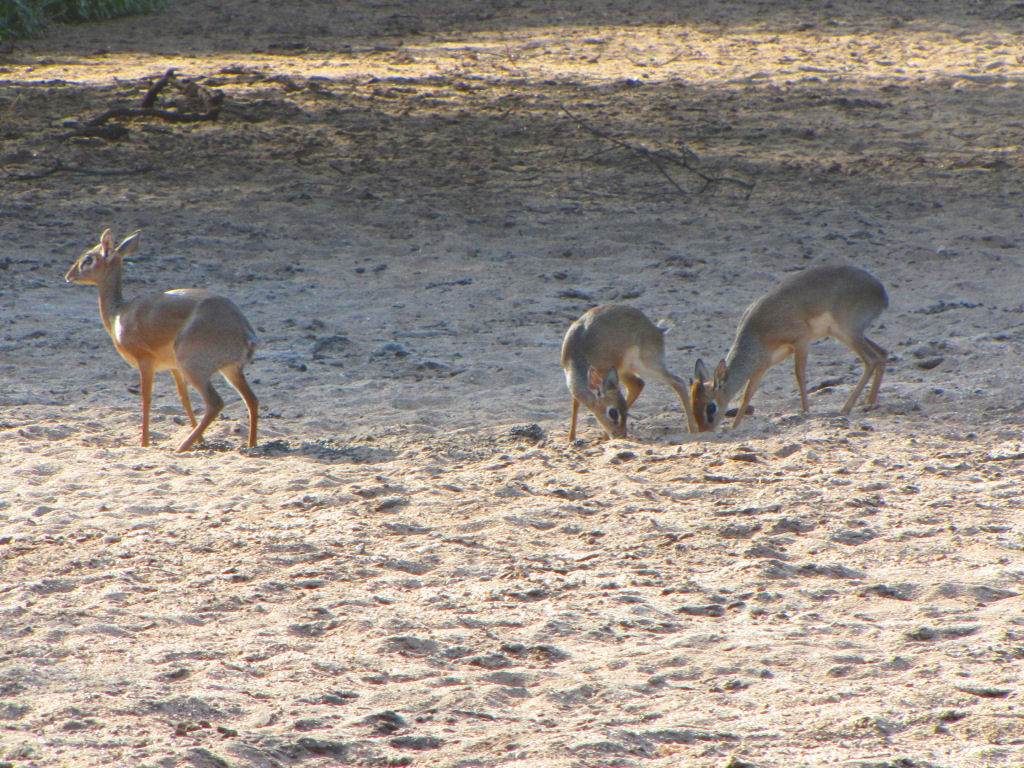Reproduction
The dik-dik is one of the rarea and
unique mammal species to bond in monogamous pairs; only 3% of
all species do this (Kranz, 1991). The
monogamous pairs mate only with each other and raise their
offspring together. Interested in the monogomy of the dik-dik?
Click
here to learn more. In dik-diks, sexual maturity is reached at
approximately six months old, and they are fully grown after
just a little over a year weighing in at 3.7-5.5 kg. The dik-dik
lifespan is approximately three to eight years of age. The young
dik-diks usually stay with their parents for eight to ten months
after they are born, or until their mother gives birth to the
new offspring (Moloiy et al., 1988).
-wiki%20(640x427).jpg)
Figure 1. Female Madoqua kirkii
The female dik-diks have a polyestrous reproductive cycle, and
their breeding is at its peak between June and July, and also
November to December. The gestation period of the female
Dik-diks is right around 170 to 174 days, which is roughly a
little over 5.5 months. Many times the dik-diks will produce two
offspring a year, with an average of ten days between giving
birth and becoming pregnant for the second time that year
(Moloiy et al., 1988).
 Figure 2. Family of dik-diks
Figure 2. Family of dik-diks
The high quality diet that the dik-dik consumes is maintained
throughout the entire year, which makes it possible for the
females to have a high state of production consistently over the
entire year. This means that the females can birth their
offspring and then continue to lactate through her next
pregnancy. This suggests that even though the seasons in their
environment are very diverse, the food
that they consume is consistent throughout the year (Moloiy et
al., 1988).
Interactions
References
Homepage
